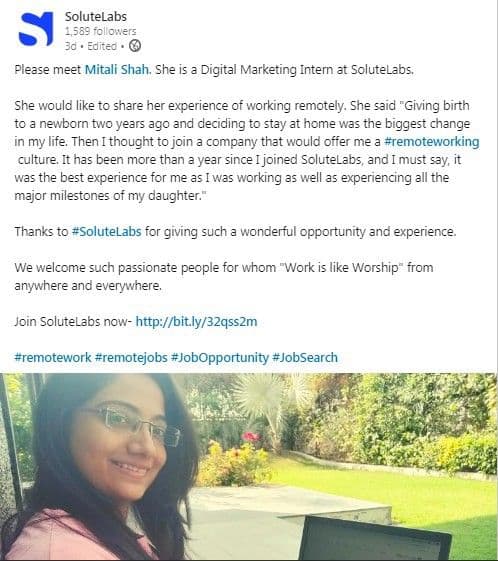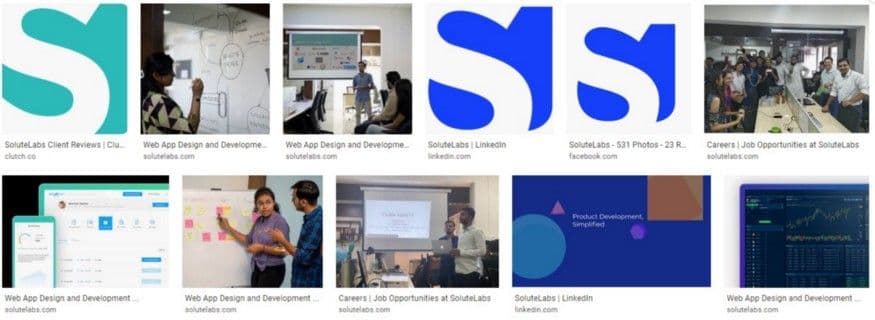Top & Fitness App Ideas Trending in 2023 Traditionally, businesses have hired people near their office locations or have made people move. This poses certain challenges:
- You can only hire someone who is physically close (or who can move). Things get complicated when there are working couples.
- You can only hire people who can commit full blocks of time, i.e. hiring someone who needs to drop and pick up their kids from school is not possible.
- As a business, you will have a smaller talent base to work with so you prioritize location over skill.
With the rise in internet speeds, collaboration tools, and mobile devices — this is changing rapidly. For millions across the world, they can now work across borders, from their homes or nearby co-working spaces — with flexible timings and without being stuck in traffic! Remote working is on the rise and often than not, it’s associated with the software industry.
Google Trends
According to a study by Buffer in 2019, 99% of interviewees said they would like to work off-site at least once in their career.
Also, as reported by Zapier at the end of 2019, 74% of the workforce would prefer to quit a job for the one that offers remote positions.
In this article, we will look at the following:
- What is Remote-Friendly v/s Remote-First v/s Remote-Only?
- What is Culture?
- How to Create your Culture?
- Pros and cons of Remote Working
- How to avoid the cons of Remote working?
Remote-Friendly v/s Remote-First v/s Remote-Only
There are different ways to go remote and it’s important to understand what are they so that one can choose what’s the most appropriate for their business.
Remote-Friendly is when a business has a physical office space(s) and prefers face-to-face interactions over virtual ones but is open to hiring remotely for most jobs within their organization — such as ours!

SoluteLabs is a remote-friendly app development company.
Remote First is when a business has a physical office space(s) but prefers to hire remotely. They urge people to get together for important stuff, maybe when projects are being kicked off, annual reviews, final deliveries, etc.
Remote Only is when businesses do not have a physical office space and hire freely across borders and time zones. These companies sometimes get together once a year for an annual trip but it might very well be the case that they never meet in person!
What is Culture?
People often are curious about the culture of various organizations. They look for clues around the web such as their photos on Google, their social media such as LinkedIn, Facebook and Instagram, read reviews about the company on Glassdoor, etc.

If you search for SoluteLabs on Google.
Culture is basically how you feel working at an organization. Right from your first day of joining to how you are mentored, how concerns are addressed, what the work process is, how much you are trusted, how you are empowered, etc.
Maybe one can’t describe it in words but culture plays a vital role in an organization — right from employee retention to even the product quality. Increased transparency and open collaboration lead to less confusion, better decisions and ultimately a superior delivery.
How to Create your Culture?
While almost all understand a culture, few realize the time and effort spent in creating one. The culture is hidden not just in the macro but in the minute details that one must pay attention to.
1. Make hiring more humane
The first encounter one will have with a potential teammate is the hiring process. It’s the first impression for the candidate, and will certainly be a lasting one. Try to get your talent acquisition team to respond to everyone who reaches out either through email, phone or even auto-generated.
Don’t try to filter everyone with robot assessments. Talk to them, make a connection and then do the assessment if you have to.
2. Make their joining memorable
The first day(s) of a new joiner is very crucial to how they make an impression of the company. Be it remote or otherwise, this is when shit gets real. While you want them to take it slow, also try to make them feel productive from Day One!
SoluteLabs organized a Bootcamp for freshers joining in 2020.
Be ready for them when they join, get a nice kit ready for them. Even if it's completely remote, you can courier a small kit to them. Also, prepare for their arrival — get the necessary access ready, their workstation, etc.
3. Empower them
Hear what people have to say, regardless of their experience — they might bring something new to the table, something that no one else had thought before. We’re always stronger as a team.
At SoluteLabs, we try to imbibe these values from the start. Not only does this make the developers heard, but also make the clients happier :)
4. Trust them
Transparency is key to Trust. Try sharing as much information as possible with the people on the team. Instead of just defining what everyone’s role in the team, make them see the bigger picture — how their work is going to change the lives of our clients and possibly their end customers.
While this isn’t an exhaustive list nor a static one — I hope you get the idea on where to start. The rules aren’t static and as the technology industry, it’s ever-evolving.
Advantages of Remote Working
Remote working has some obvious benefits such as:
- Save time in commuting
- Be able to work without borders
- Work in different timezones hence can support a wider range of clients with less effort
- Hire scarce talent relatively easily
- Find cost-effective alternatives if needed
But apart from the much obvious benefits, we have seen some hidden ones as well, such as:
- Being able to focus better since no one will come up to your desk unannounced.
- Some people (especially developers) love to work at odd times, such as at night, early mornings — this can be accommodated until they overlap a few hours with the rest of the team
- If the teammate has personal priorities, they can freely take care of them while ensuring that their work doesn’t suffer
Disadvantages of Remote Working
While it might look all rosy, Remote Working isn’t without its pitfalls. Some of them are:
- If there is a loss of connectivity, the onsite team feels as if they are stranded
- In cases where a response is needed quickly, it can cause issues especially if you have SLAs/expectations set
- Remote team members sometimes might not feel a true part of the culture because a lot of bonding really happens during breaks, weekends, night-outs, dinners, and celebrations!
How to avoid the cons of Remote Working
Like there are some cons of working in an open space, there will always remain some issues with Remote Working but there are ways to alleviate some of them, such as:
- Get the new joiners into your physical space for a few weeks when onboarding the company. This way, they get to know the culture first hand, you can assign them an onboarding buddy and the transition would be much smoother.
- Set expectations very clearly from the start — both to the team and from the teammate. If the project requires synchronous communication, it has to be mandated and if the teammate is a single mother who also takes care of their children, set the expectations with the team accordingly.
- Communicate often, preferably with video. When you go for daily standups, planning sessions, etc — try getting everyone to keep their video on, this will help you identify body language as well as form more meaningful relationships amongst peers.
- Have at least one annual outing wherein you get people from the entire organization to meet each other, exchange ideas, have fun, and make deeper connections. Nothing glues people together better!
It is only fit that I write about this working remotely from my hotel in Wayanad, Kerela — sipping a Long Island Iced Tea!











